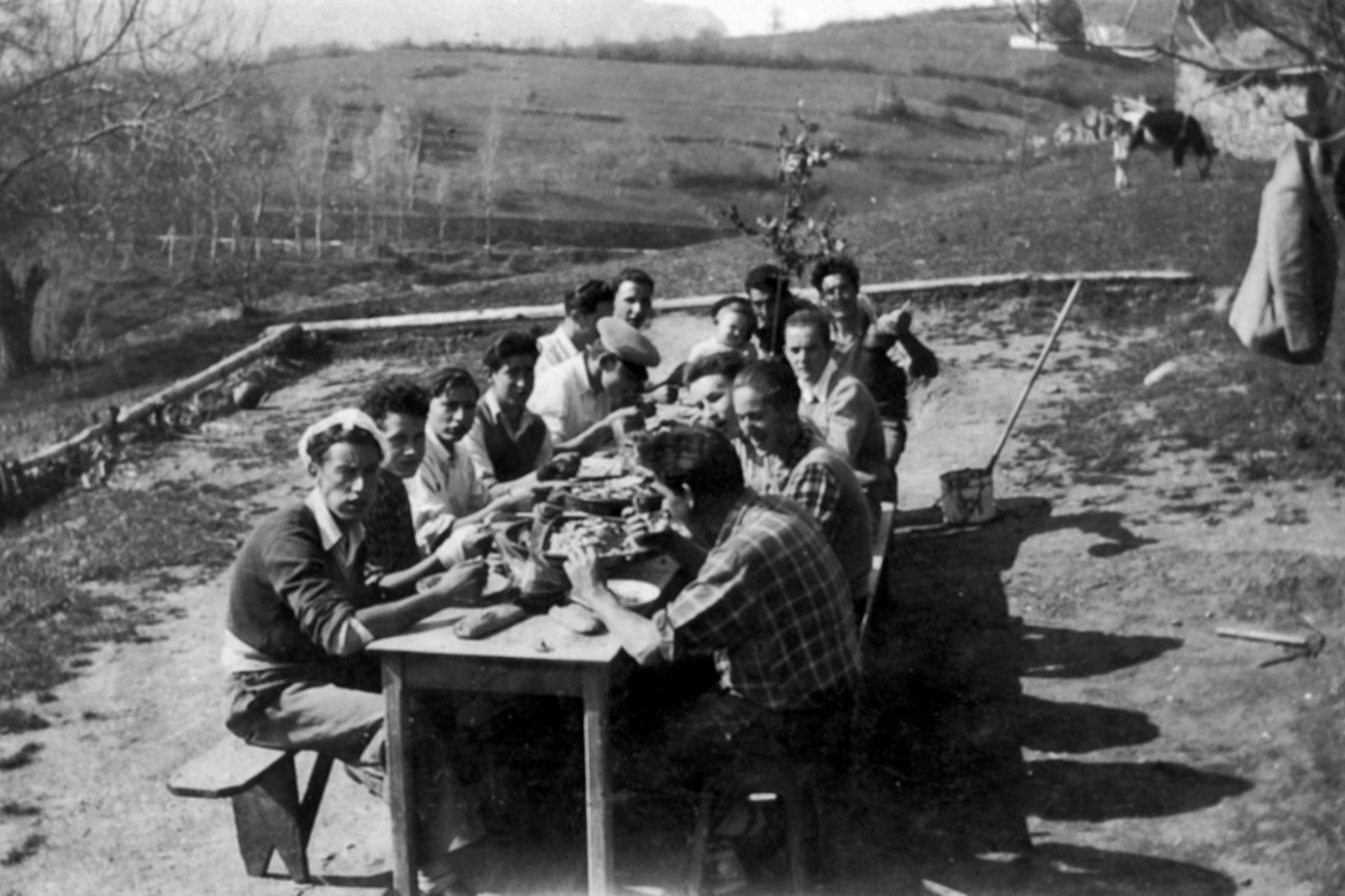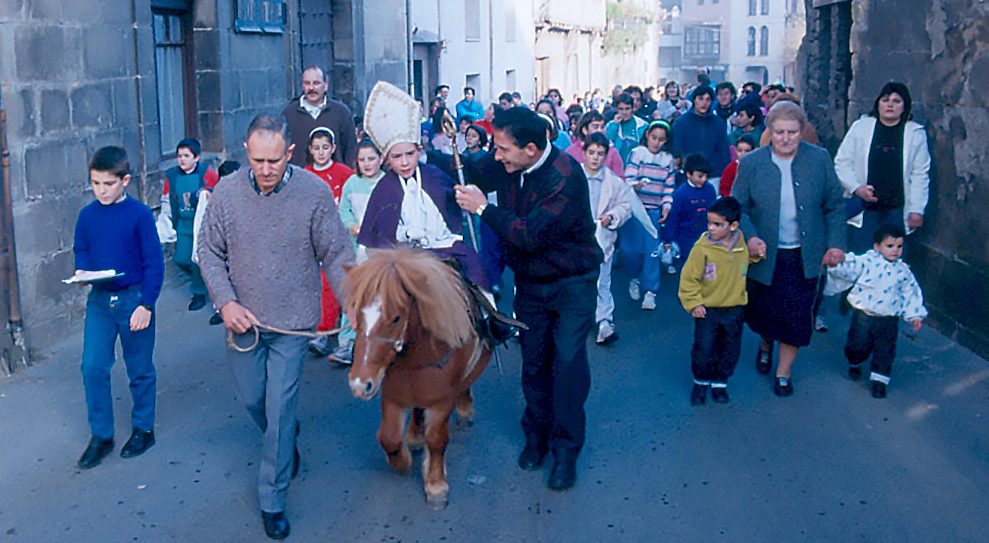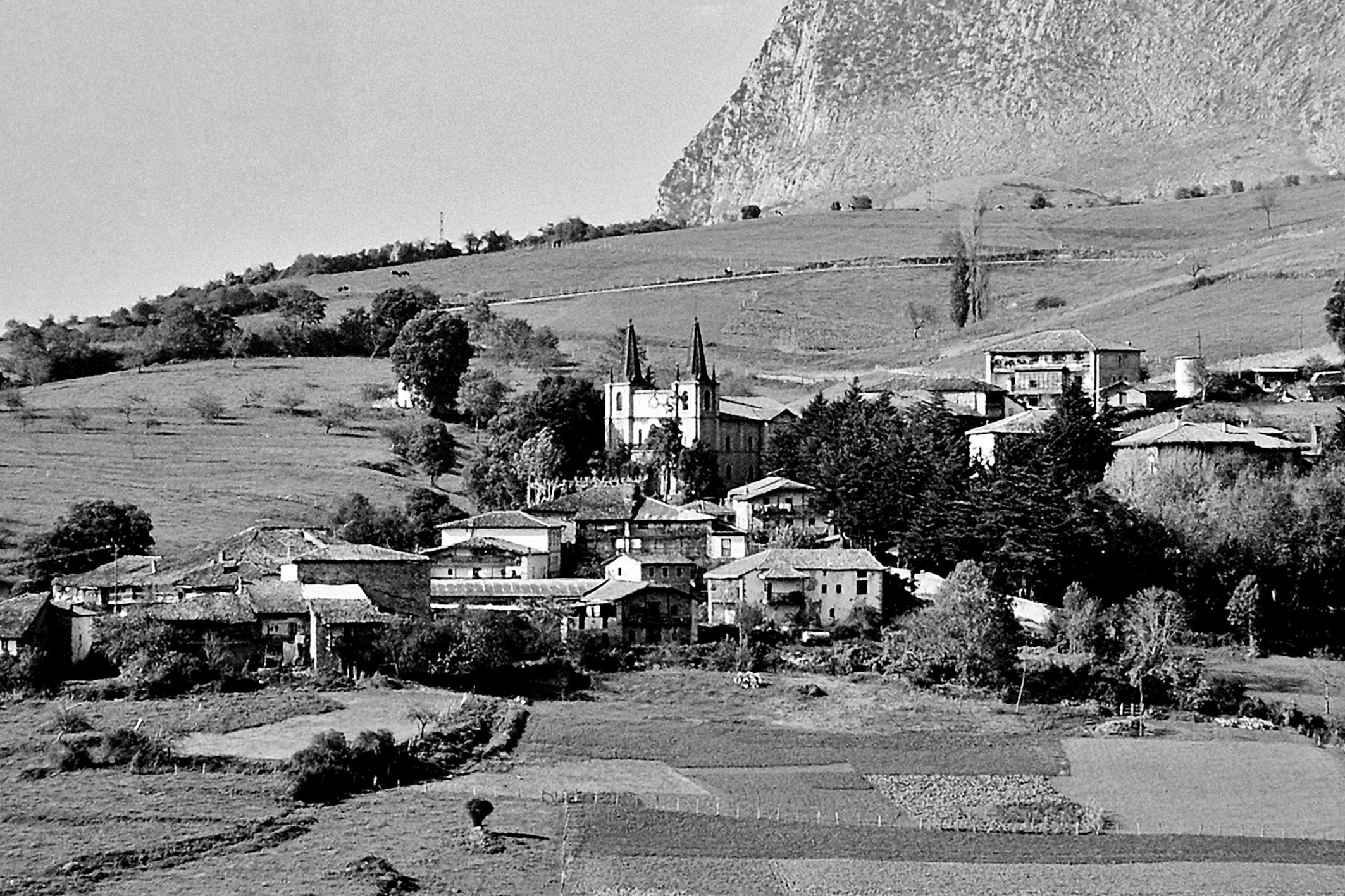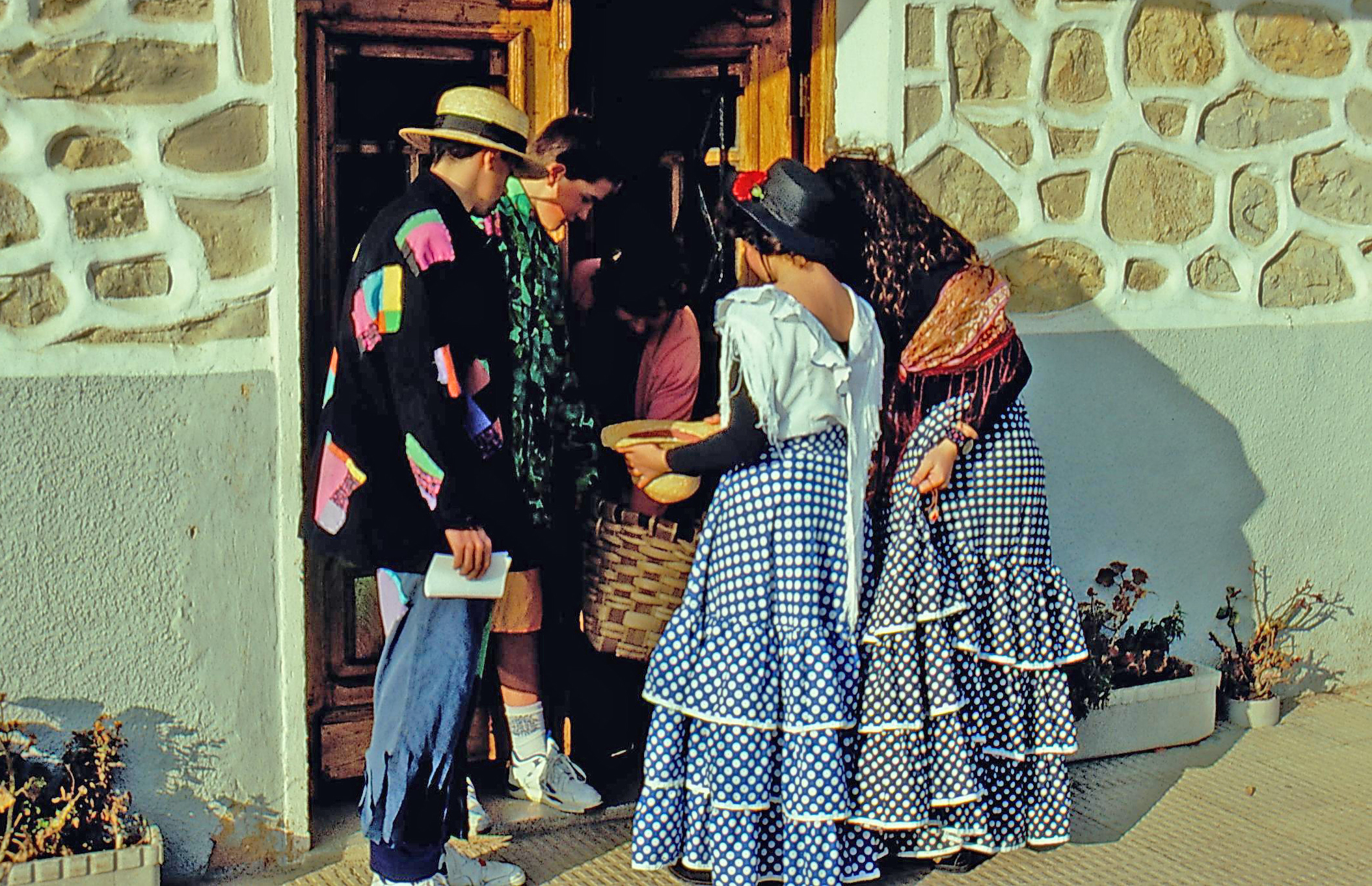Archives
Asking for alms is still a popular practice in the winter calendar across the length and breadth of the country, Christmas and Carnival being the main festive cycles celebrated during the season.
Groups of youth march the streets singing traditional songs and collecting alms at both annual festivals. Each occasion features its own repertoire, though themes might sometimes coincide, as verses are addressed to the landlord, the landlady, or other members of the household. (more…)
During the 1940s in the Valley of Carranza, a group of youth from the neighbourhood of Biáñez used to go around asking for alms on 28 December, the Feast of the Holy Innocents.
On that day the young girls paraded house to house and door to door in the neighbourhoods of Biáñez, Bollain and Paules, all three administered by the parish of Biáñez, reaching sometimes as far as Ranero and Santecilla, neighbourhoods that belong to the parishes with the very same names and somewhat removed from their place. (more…)
In a good many localities, both in the northern and southern Basque Country, carnival started on Fat Thursday, that is, the Thursday immediately preceding Lent. Such day was known by different names in Spanish, jueves de lardero being one of them. The feast was mainly enjoyed by school-age children. In Zigoitia (Álava) it was traditionally celebrated on the last Thursday in January. (more…)

Group of lads from Biáñez Council celebrating a banquet, 1947. Julián Ahedo.
The Marzas or songs sung to welcome in the spring had in times past a strong root in the Carranza Valley. It is a pagan festival whose origins date back to time immemorial and which Julio Caro Baroja related to the beginning of the Roman year. Traditionally, on 1 March young male singers, called marceros, gathered in groups of four to eight sang the Marzas house to house and neighbourhood to neighbourhood. Dressed in daily clothes, they made their way to the sound of cowbells and bell collars. Along with them walked the zarramasquero, responsible for carrying the zarramasco, a holly branch decorated with coloured paper strips. He stood out from his fellow singers by two crossed sheep manes he wore on his chest and back held with bell straps and several cowbells at the waist that sounded as he jumped during the singing. Occasionally his face was covered with a mask made of animal skin. (more…)





